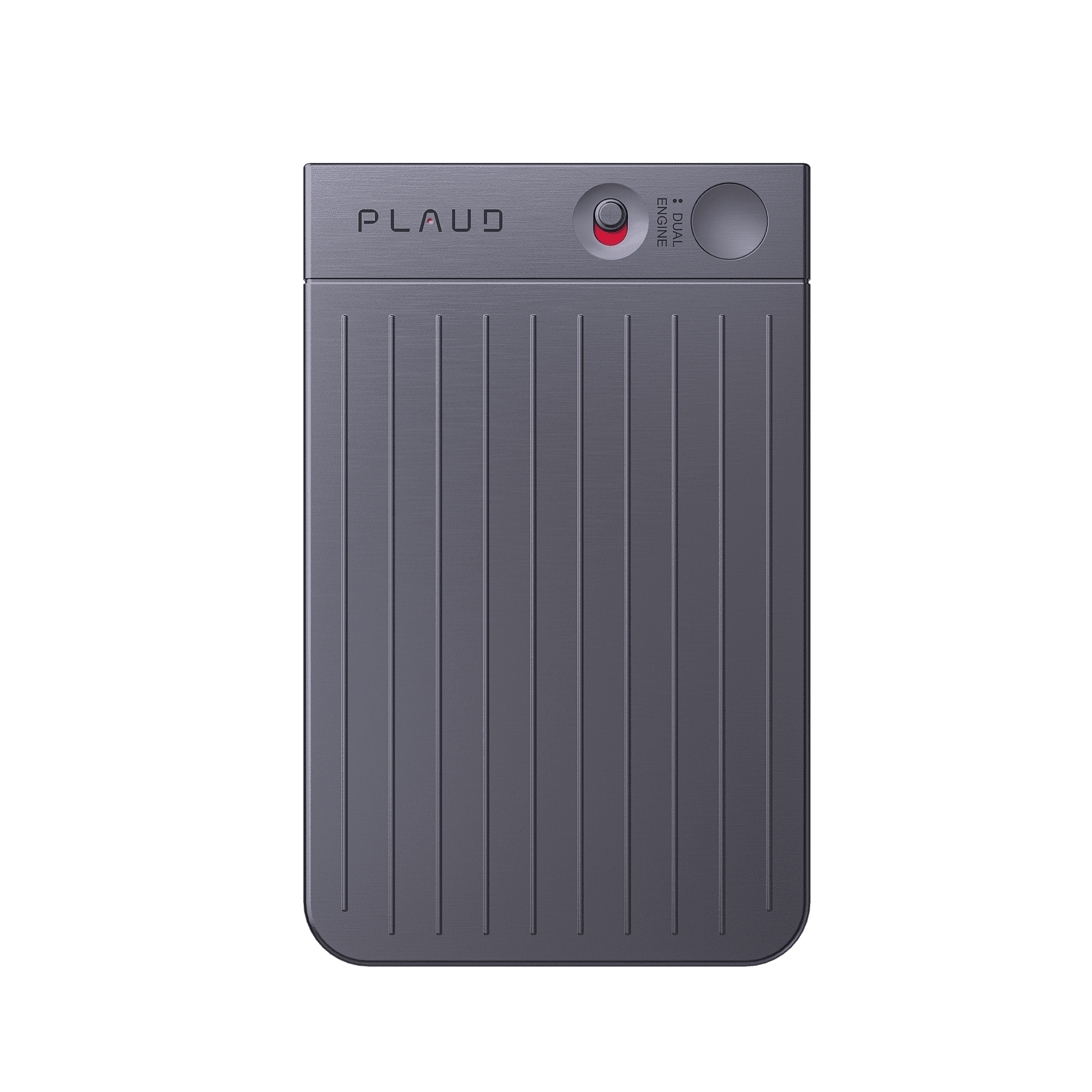Project planning! What is it? And how does it help one? A project plan is simply an important set of tools used by a project manager. Now, project planning involves laying out the exact roadmap or goals of implementation that stakeholders need to know to understand what to do and when to do it.
Project planning helps one save money and a lot of resources. But starting from scratch is intimidating and really time-consuming. So, project plan templates are the best course of action to take. The majority of the project plans have a clear path, and most of them use a project planning template. These templates provide them with a standby resource of organised tasks, responsibilities, and steps that help them work faster and save a lot of time.
Over the years, project planning templates have evolved significantly, and tools like Plaud's custom template help further enhance this process. In this guide, we will provide you with the top project planning templates currently in use, helping you transition from uncertainty to a well-crafted plan that gets your project done. Let's dive in!
Stop building plans from scratch: Use a project plan template
Developing a project plan from scratch can be time-consuming, and one may overlook crucial details. Templates solve this by giving teams pre-built frameworks to work with. Instead of starting from scratch, project managers can focus on execution and communication.
Project planning templates bring consistency. Whether you are managing a product launch, a client engagement, or an internal initiative, project planning templates will ensure stakeholders, as well as managers, are on the same page. With modern tools like Plaud’s custom templates, they become more than static documents; they evolve into dynamic workflows that adapt to any changes made in the project.
How to choose the right project plan template
Choosing the right template depends on the size of the project, its complexity, and the team's workflow. For simple projects, an action plan template is just enough: simple tasks, owners, and deadlines. For complex projects, a work breakdown structure (WBS) or Gantt chart will be helpful to visualize scope and dependencies.
|
Template type |
Purpose |
Benefits |
Drawbacks |
Plaud advantage |
|
Work breakdown structure (WBS) |
Breaks the project into deliverables and tasks |
Clear scope, easier estimating, structured workflow |
It can get too detailed and overwhelming |
Custom prompts build WBS instantly |
|
Gantt chart |
Visualize timeline and dependencies |
Tracks schedule, deadlines, dependencies |
Complex to update manually |
AutoFlow turns notes into a Gantt view |
|
Kanban board |
Manage tasks with status columns |
Great for agile, visual workflow, and bottleneck spotting |
Less suited for long-term planning |
Photo-to-Template digitizes whiteboards |
|
RACI chart |
Define roles and responsibilities |
Reduces confusion, clarifies accountability |
Can feel rigid in dynamic projects |
Quick role templates ready to customize |
|
Action plan |
List tasks, owners, deadlines |
Simple, fast, clear accountability |
Limited for complex projects |
AutoFlow is generated from meeting notes |
|
Timeline template |
High-level project milestones |
Easy for stakeholder updates |
Lacks task-level detail |
Templates adapt to custom formats |
|
Project charter |
Define goals, scope, and stakeholders |
Ensures alignment at start |
Doesn’t guide execution |
Photo-to-Template converts paper forms |
|
Risk management plan |
Identify and mitigate risks |
Improves foresight, reduces surprises |
Time-intensive to maintain |
Reusable custom risk templates |
|
Resource plan |
Allocate people, tools, and budgets |
Prevents bottlenecks, ensures efficiency |
Can be inaccurate if the project shifts |
Flexible templates update with notes |
Top 5 project plan templates with use cases
Normally, it is not every project that will require the same level of detail; that is why a good number of templates are created to serve different needs. Some are built for overall strategy, and others are designed for day-to-day operations. Below are five of the most used project planning templates, each with an example use case to show how they can be used in real situations. Together, they constitute a collection of tools that are appropriate for small and big projects.
Work breakdown structure (WBS)

A Work Breakdown Structure (WBS) breaks a project down into its smaller, manageable pieces. It starts with general deliverables and breaks them down to tasks and sub-tasks. It is particularly suitable when scope definition and accountability are essential.
Use case: For a software development project, the WBS might start with phases like Design → Development → Testing → Deployment. The phase is further broken down into deliverables (such as "UI mockups" and "API integrations"), and these deliverables are then broken down into tasks (like "Build login module" and "Test payment gateway"). Layered visibility enables teams to detect gaps, allocate resources effectively, and avoid scope creep.
Using Plaud's templates, managers can also develop WBS structures with a single prompt, such as "Break down a 6-month mobile app launch project." And should there already be a whiteboard WBS sketch established on a team, the Photo-to-Template feature instantly turns it into a formatted, shareable state.

Gantt chart

A Gantt chart is a timeline layout template used to show tasks, duration, and interdependencies. It is among the most popular project management tools, especially when ordering and deadlines matter.
Use case: Consider a product launch campaign marketing. All tasks, such as "Design assets," "Draft press release," and "Launch ads" depend on each other. A Gantt chart maps them onto a timeline so that content creation is synchronized with advertising and PR calendars. This avoids slow time and ensures everyone is working within the same timeframe.
Kanban board

Kanban boards visualize work in progress by dividing tasks into columns such as To Do, In Progress, and Done. Using this template, status is easy to view, bottlenecks are easy to spot, and tasks can be prioritized in real time.
Use case: In an Agile software role, developers and testers move tasks like "Bug fix #132" or "New login page" across the board as they make progress. Teams instantly visualize workload distribution and blockers, improving transparency and productivity.
Here, Plaud enhances its use with its Photo-to-Template feature: a snapshot of a physical Kanban whiteboard is turned into a digital board that can be reused, updated, and shared.
RACI chart

The RACI chart defines roles by indicating who is Responsible, Accountable, Consulted, and Informed for each task. It prevents miscommunication, especially in cross-functional projects with shared responsibilities.
Use case: During an audit, operations, finance, and legal groups must get together. A RACI chart clearly establishes that report preparation is the responsibility of finance, approvals are handled by legal, operations are consulted, and executives are notified. This reduces unnecessary work duplication and prevents missed handoffs.
Action plan
An action plan is the most minimalistic template, typically just a set of tasks with owners and deadlines. It's best suited for small projects, fast initiatives, or isolated events where lots of planning is unnecessary.
Use case: Organizing a company retreat could include just a list of tasks like "Book venue," "Organize catering," "Design agenda," and assigning them to individuals with deadlines. It brings responsibility without unwarranted complexity.
Plaud’s photo-to-template feature make action plans more effective by automatically creating them from meeting transcripts. With AutoFlow, work accomplished in planning meetings appears in an action plan template ready to be followed and distributed.
Keep your plan alive with automation
Project plans fail when they're created once and left unchanged.
With Plaud, project plans evolve as work is done:
- Meetings are recorded into automatic transcripts.
- Summaries indicate key tasks and decisions.
- Updates can automatically be synced to tools like Slack, email, or project software.
This makes the plan reflect the project's status without any intervention. Templates become dynamic dashboards that reduce administrative effort and align teams.
Key takeaways
- Project plan templates save time and bring structure to any project.
- Different templates fit different project sizes and needs.
- Plaud makes templates dynamic with custom prompts and Photo-to-Template.
- Choosing the right template improves clarity, alignment, and execution.
Conclusion
Project planning templates always give you a better role in how you and your team operate. Instead of starting from scratch, managers can apply proven templates like WBS, Gantt charts, Kanban boards, RACI charts, and action plans, which will bring understanding, accountability, and efficiency to every stage of a project. These templates ensure that tasks are visible, roles are prioritized, and deadlines are reasonable, whether the project is small-scale and internal or a large, multi-phased endeavor.
FAQ
Can I use a project plan template in Google Sheets or Excel, or do I need project software?
Yes. Simple templates, such as action plans and RACI charts, can be created in Excel or Sheets. Intricate visual templates like Gantt charts or Kanban boards are handier with project software, though.
Do I need a different template for small, simple projects vs. complex ones?
Yes. Small projects are sufficient with just an action plan, but complex projects are better equipped with WBS or Gantt charts for tracking.
What’s the easiest way to share a plan with stakeholders who don’t use our tool?
Export the templates as PDFs or share links. Plaud also supports auto-syncing of templates to email for easy sharing.
Are templates static, or can they be altered as the project unfolds?
Although fixed classic templates exist, Plaud auto-updates with AutoFlow, causing plans to evolve with projects.
Can I create a custom template instead of using a fixed one?
Yes. Plaud offers both prompts and Photo-to-Template options for custom templates, allowing you to easily create structures tailored to your process.





